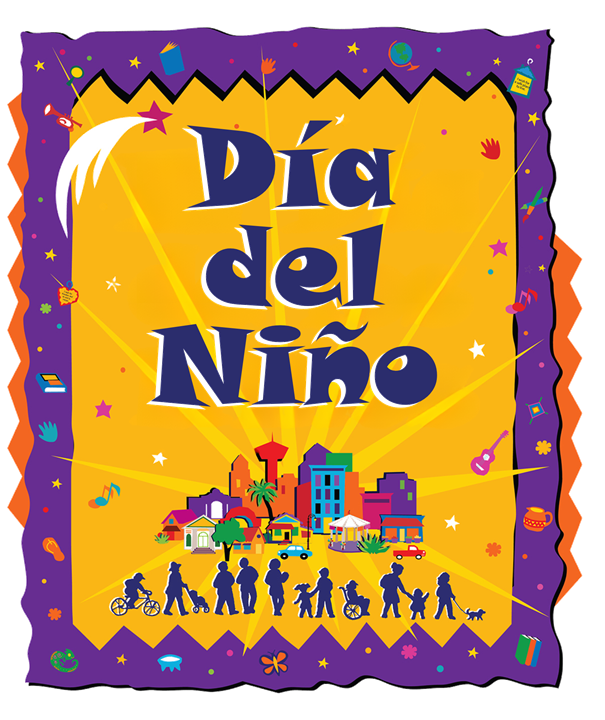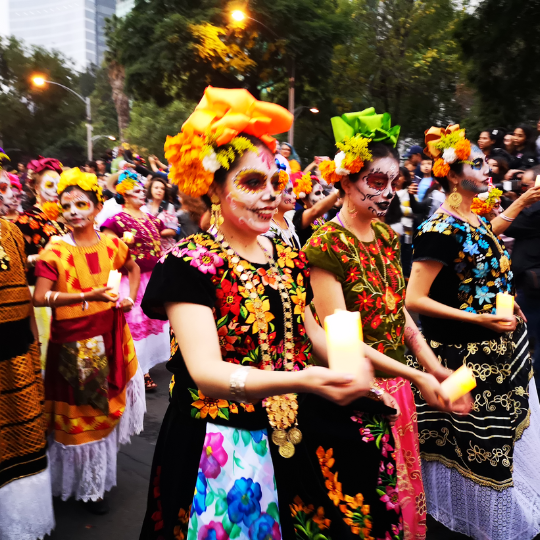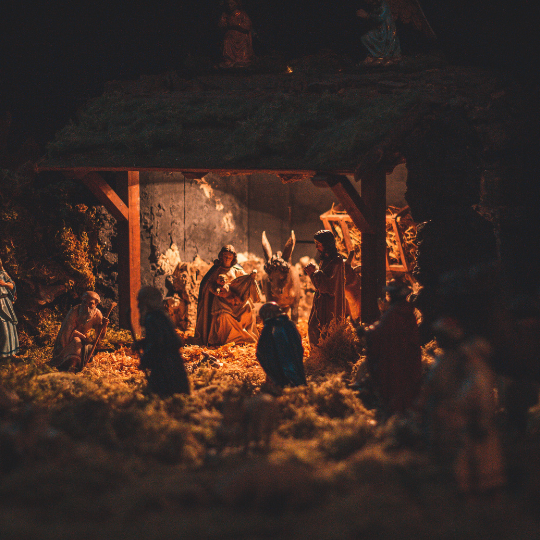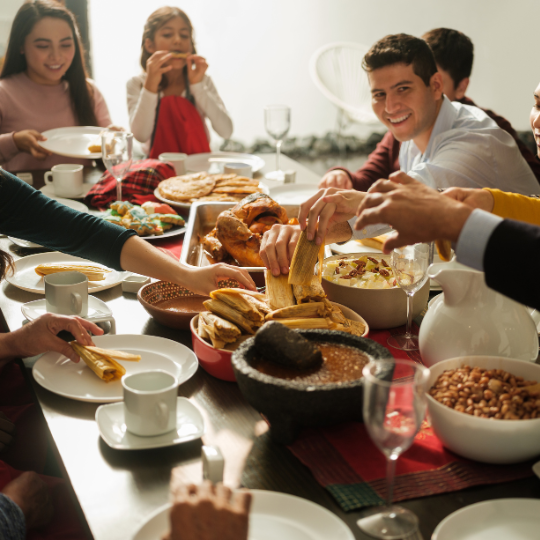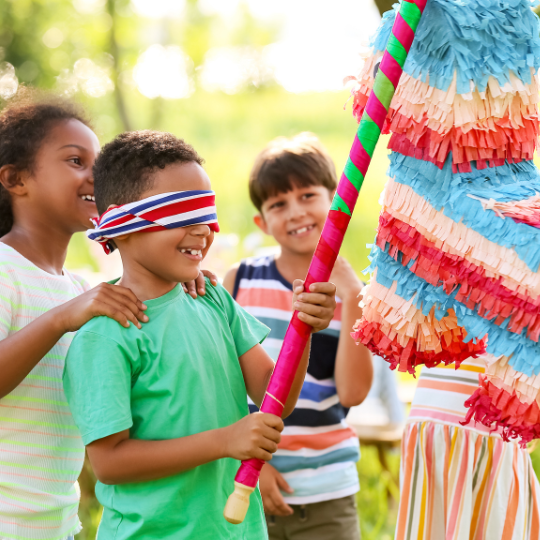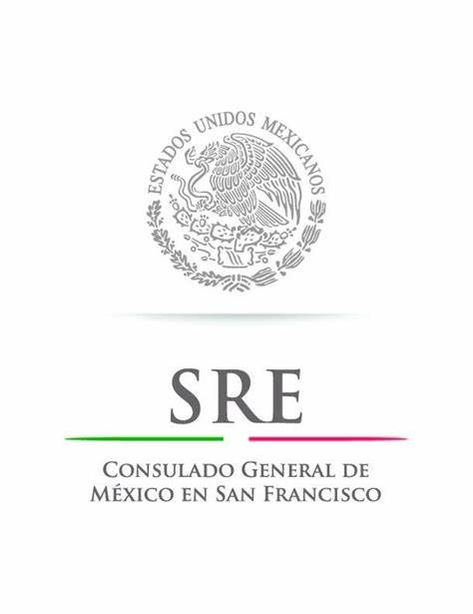
Fiestas means party and we have many reasons to celebrate. It is said that there is a festival somewhere in Mexico every day of every year. Traditional holidays include national holidays that celebrate the country’s independence, national heroes, and special moments in history. Religious holidays have celebrations that incorporate Indigenous roots with church celebrations like Día de Muertos, Navidad, Carnival, and La Virgen de Guadalupe. Music and dance festivals occur frequently with dance competitions like Guelaguetza and mariachi and student music or estudiantinas and the Cervantino festival. Other fiestas mark personal reasons to celebrate like Quinceaneras, weddings, and birthdays.
Some of the fiestas are explored and explained in the Cultura Topics listed below. You can always contact us if you would like a more intense workshop targeted for your group.

Somos Fiestas Cultura Cards
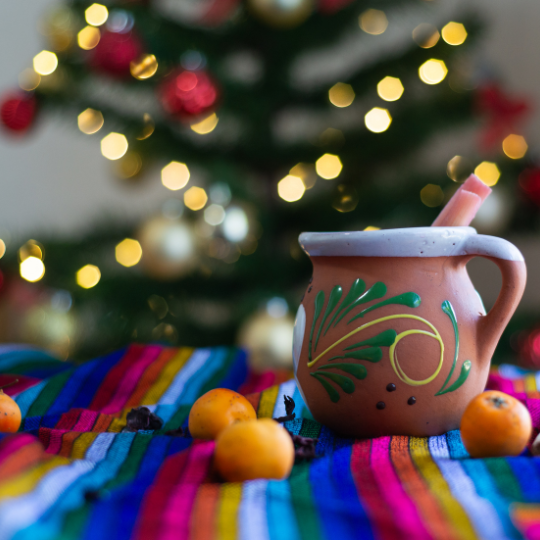
Navidad
The traditions and festivities around Christmas time are many and are celebrated with friends and family. We gather together for tamaladas, we sing and celebrate Las Posadas, we craft luminarias to decorate our yards, we make buñeuelos and hot chocolate, we set up Nacimientos and Christmas trees. Join us and let’s make memories!
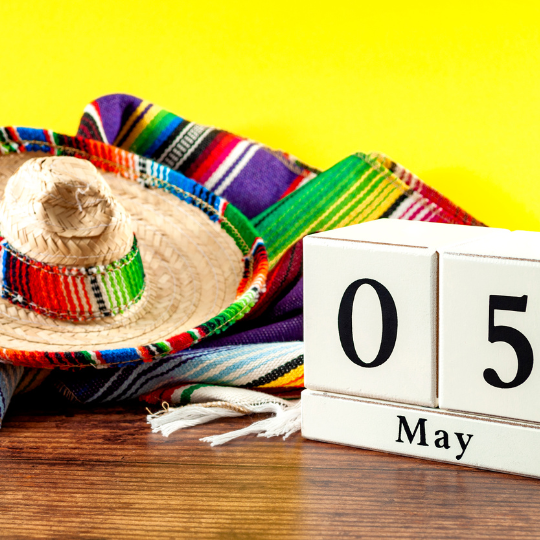
Cinco De Mayo
The Battle of Puebla is actually celebrated in the US more than in Mexico but it is a very important date in Mexico’s history. It marks a small victory over the French by an army of peasants half the size of the French troops. If the French had won the future of the U.S. might have been changed because it would have freed them to help the U.S. war effort and the Confederates could have beaten the North. Our country could have been very different.
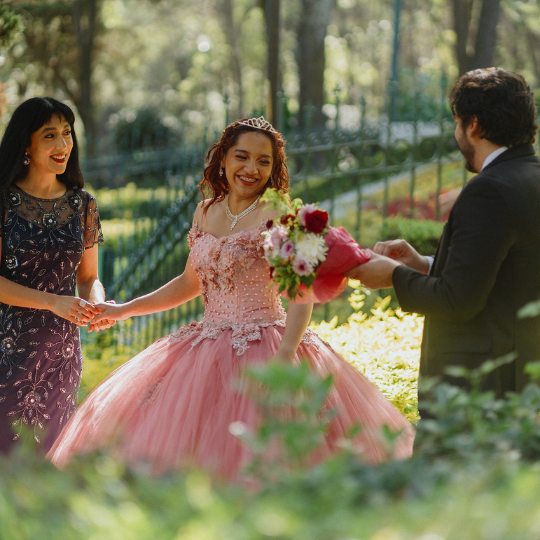
quinceañera
In the US it’s sweet sixteen but in our culture fifteen is the age that is celebrated. It’s the year that traditionally shared with the world that a young girl has come of age and transitions from childhood to womanhood. There are damas, chambelanes, padrinos and madrinas and the father is the one who introduces his little girl to society and dances her first dance with the honoree.

Feast of San Antonio
June 13 is feast day of St. Anthony. In 1692 a Spanish expedition founded and named San Antonio for Saint Anthony of Padua. Over the years the celebration has come to mark not only the founding of the city but a time to tell the real history with the “spinning” of San Antonio. Watch our interview with San Antonio artist, Rolando Briseño.

